Bringing a sick bird home from the vet can be daunting, but a well-prepared bird hospital cage setup makes all the difference. From my experience rehabilitating birds like my galah Charlie after surgery, having a dedicated hospital enclosure ready can stabilize your feathered friend and support recovery. Whether it’s a respiratory issue or post-op care, this simple system—warm, clean, and stress-free—has saved lives in my care. Read on for practical tips every bird owner needs.
For starters, check out the best parakeet cage options that double as compact hospital spaces for smaller species.
 Charlie recovering in the heatbox after surgery, with shredded newspaper lining
Charlie recovering in the heatbox after surgery, with shredded newspaper lining
1. Keep It Simple
A bird hospital cage should strip away complexities for a weakened bird unable to handle its usual aviary. Opt for a smaller enclosure like a collapsible dog crate, travel cage, or reptile heatbox to minimize effort for eating, drinking, and perching.
Everything stays within easy reach—no climbing required. Stock shallow dishes for food and water to prevent exhaustion. Low perches, such as custom T-stands or store-bought ones modified with natural branches, limit fall distances to just an inch or two. For prolonged use, wrap perches in vet wrap to cushion feet and avoid pressure sores.
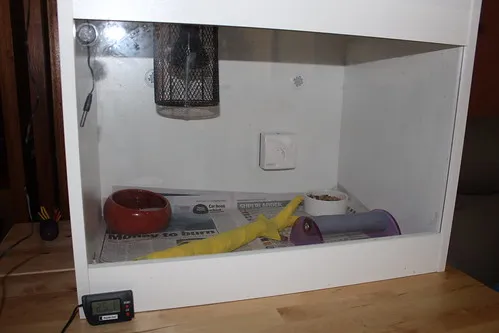 Basic heatbox setup: simple, warm, clean, and stress-free for recovery
Basic heatbox setup: simple, warm, clean, and stress-free for recovery
This approach worked wonders for Charlie, who was too frail post-surgery to navigate anything elaborate. Avian vets emphasize simplicity to conserve energy, allowing the bird’s body to focus on healing rather than survival basics.
 Shallow dishes in the hospital cage so the bird doesn't have to climb to eat or drink
Shallow dishes in the hospital cage so the bird doesn't have to climb to eat or drink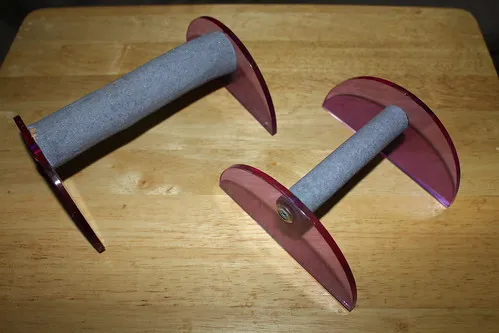 Range of low T-perches screwed into perspex sides for safety
Range of low T-perches screwed into perspex sides for safety Charlie on padded perches during his weakest phase
Charlie on padded perches during his weakest phase
2. Prioritize Cleanliness
Hygiene is non-negotiable in a bird hospital cage, as sick birds are prone to secondary infections from bacteria in droppings or spoiled food. Change linings multiple times daily—use newspaper for easy misting and rolling to contain dust and pathogens.
Set up for quick access: slide-out trays or frequent lining swaps help monitor droppings for health changes, like color or consistency shifts indicating liver issues. Clean with vet-grade disinfectants like F10SC, which targets viruses and bacteria without harming birds. Available from avian vets or online, it’s a staple in professional rehab setups.
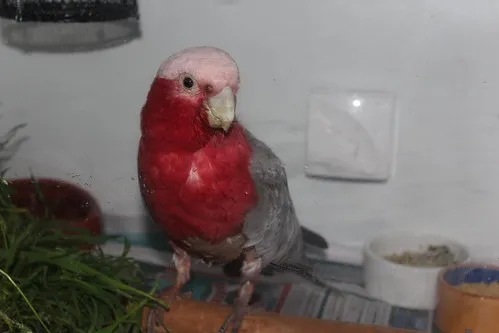 Damp grass in a dish for gentle bathing when the bird is too weak—easy to clean up
Damp grass in a dish for gentle bathing when the bird is too weak—easy to clean up
In my routine, daily deep cleans prevented complications for Charlie’s fatty liver disease recovery. The Association of Avian Veterinarians (AAV) stresses this to reduce cross-contamination risks.
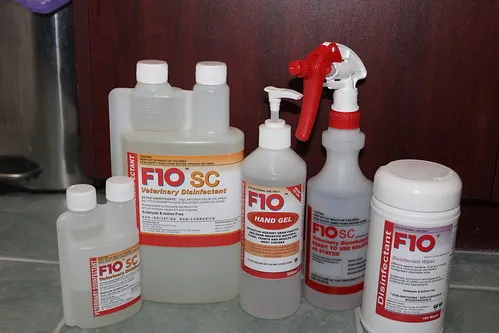 F10 disinfectant collection—vet-grade and bird-safe for thorough cleaning
F10 disinfectant collection—vet-grade and bird-safe for thorough cleaning
Consider adding a cage bird feeder designed for easy removal and hygiene during hospital stays.
3. Maintain Optimal Warmth
Sick birds can’t regulate body temperature effectively—their normal range is 101-104°F (38.5-40°C), dropping dangerously low during illness. Aim for 77°F (25°C) in the bird hospital cage using reptile gear like heatboxes with thermostats.
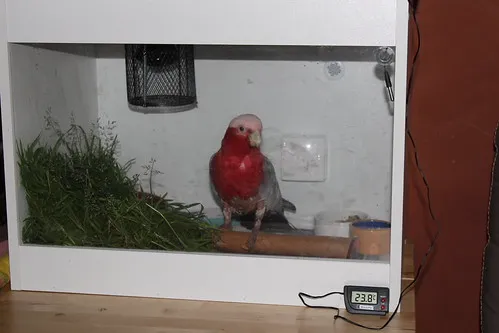 Thermostat-controlled heat globe maintaining 23-26°C range, with digital thermometer for accuracy
Thermostat-controlled heat globe maintaining 23-26°C range, with digital thermometer for accuracy
A heatbox excels here: vents ensure airflow while thermostats cycle a globe. For everyday use, partially cover a travel cage and add an external ceramic heat lamp (e.g., Exo Terra 60W). Avoid red bulbs—they may disrupt sleep or pose shatter risks with Teflon coatings harmful to birds.
 Elderly galah Cocky Boy under 24/7 heat lamp in his disabled setup
Elderly galah Cocky Boy under 24/7 heat lamp in his disabled setup Exo Terra Ceramic Glow Lamp with 60W ceramic globe for safe, light-free heating
Exo Terra Ceramic Glow Lamp with 60W ceramic globe for safe, light-free heating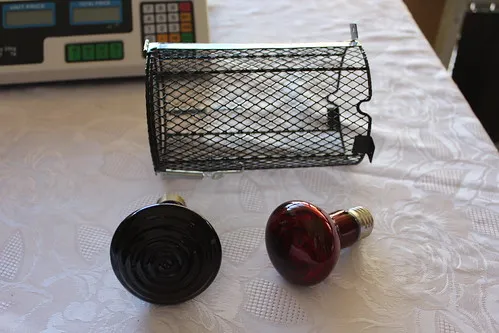 Red heat globes and protective black mesh cage to prevent burns
Red heat globes and protective black mesh cage to prevent burns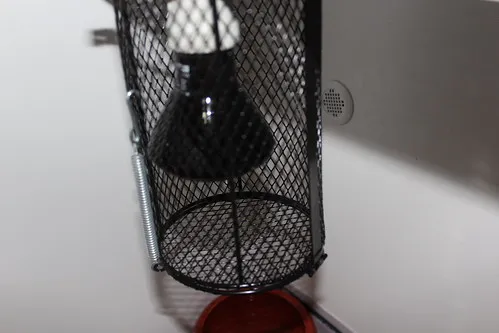 Black powder-coated cage fitting securely over the ceramic globe
Black powder-coated cage fitting securely over the ceramic globe
Test setups with a digital thermometer—my 50W ceramic runs 5°C hotter than red bulbs, per reptile enclosure guidelines. For seniors like my 65-year-old Cocky Boy, this has been lifesaving during heart flare-ups.
A geo bird cage with heat compatibility works well for modular hospital conversions.
4. Create a Stress-Free Zone
Locate the bird hospital cage in a quiet, dim area away from TVs, kids, pets, or foot traffic. Sick birds need uninterrupted rest—constant checking stresses them further.
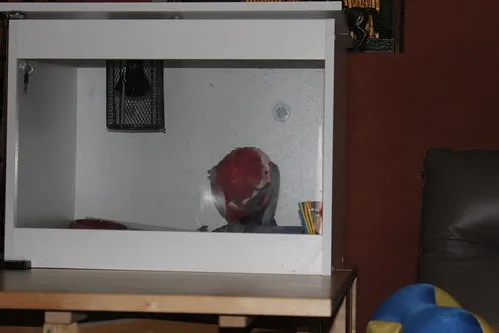 Quiet spot for the bird hospital setup to promote calm recovery
Quiet spot for the bird hospital setup to promote calm recovery
Humans are noisy, so balance monitoring with distance. Dim lights mimic natural cycles, aiding hormonal stability.
Explore home birds care tips for integrating quiet recovery spaces seamlessly.
Charlie’s progress showed when he tampered with the thermostat—signaling readiness to return to his main cage with an external lamp.
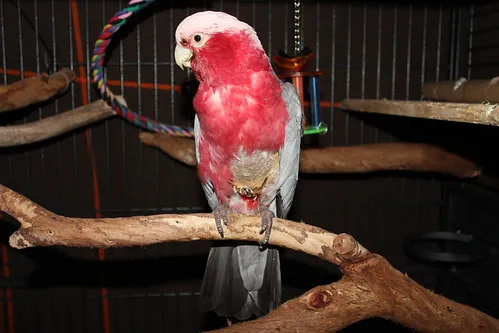 Charlie back in his own cage after mastering the heatbox, with external lamp access
Charlie back in his own cage after mastering the heatbox, with external lamp access
Final Thoughts on Bird Hospital Cages
A bird hospital cage boils down to simplicity, cleanliness, warmth, and peace—essentials that turned Charlie’s dire post-surgery state into stable management of his advanced fatty liver disease. Consult your avian vet for tailored advice, meds, and disinfectants. With biopsy-confirmed progression, we focus on quality days ahead.
Prep yours today; it could be the difference between crisis and comfort. Share your setups in comments and explore more bird health guides!
Mel Vincent is an animal rehabilitator in Australia. For respiratory concerns, see bird respiratory infection medicine.
References
- Association of Avian Veterinarians (AAV): Guidelines on supportive care for sick birds.
- F10 Products: Veterinary disinfectant safety data (f10products.com).
- Personal rehab experience with galahs and elderly parrots.
